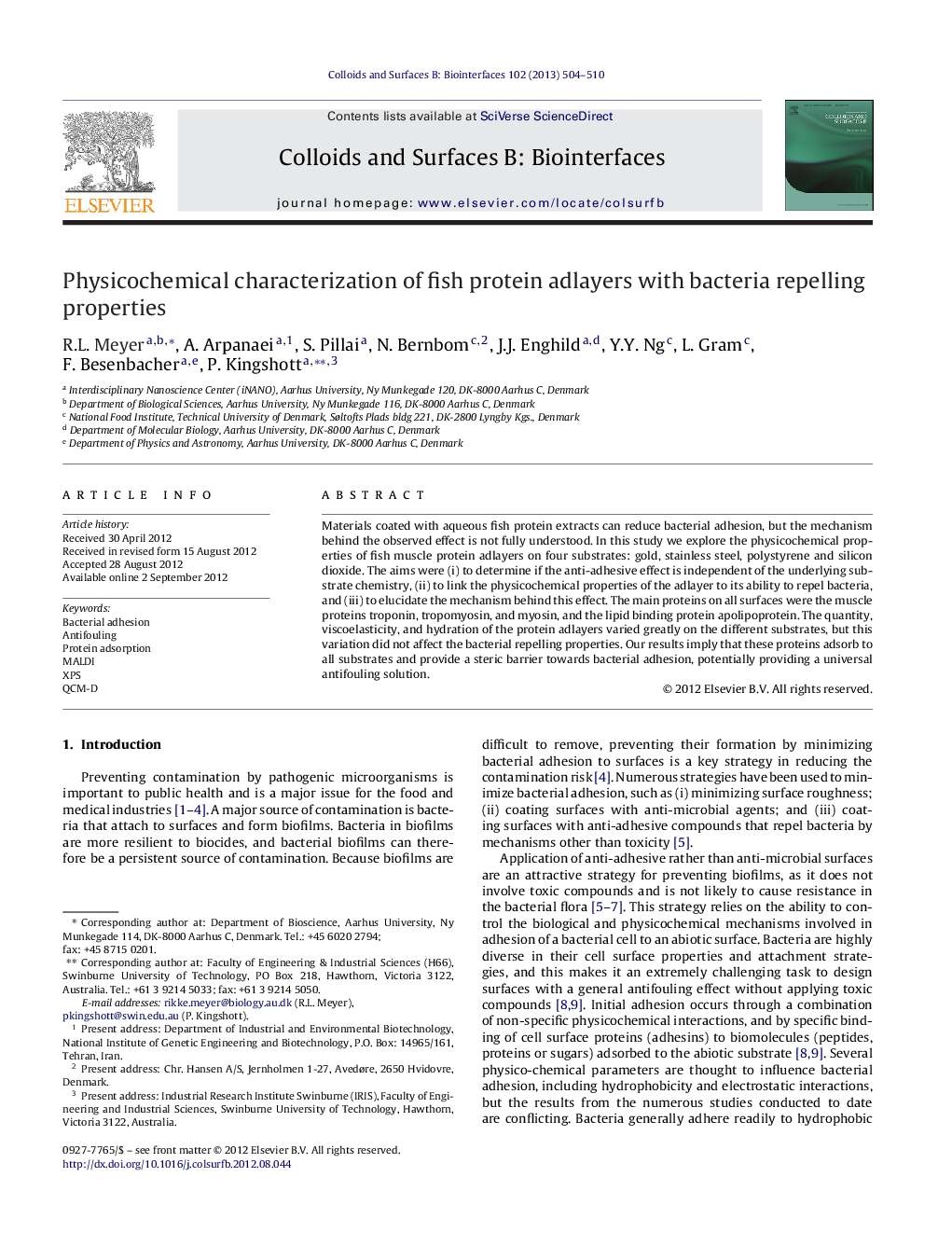| Article ID | Journal | Published Year | Pages | File Type |
|---|---|---|---|---|
| 600563 | Colloids and Surfaces B: Biointerfaces | 2013 | 7 Pages |
Materials coated with aqueous fish protein extracts can reduce bacterial adhesion, but the mechanism behind the observed effect is not fully understood. In this study we explore the physicochemical properties of fish muscle protein adlayers on four substrates: gold, stainless steel, polystyrene and silicon dioxide. The aims were (i) to determine if the anti-adhesive effect is independent of the underlying substrate chemistry, (ii) to link the physicochemical properties of the adlayer to its ability to repel bacteria, and (iii) to elucidate the mechanism behind this effect. The main proteins on all surfaces were the muscle proteins troponin, tropomyosin, and myosin, and the lipid binding protein apolipoprotein. The quantity, viscoelasticity, and hydration of the protein adlayers varied greatly on the different substrates, but this variation did not affect the bacterial repelling properties. Our results imply that these proteins adsorb to all substrates and provide a steric barrier towards bacterial adhesion, potentially providing a universal antifouling solution.
Graphical abstractFigure optionsDownload full-size imageDownload as PowerPoint slideHighlights► Proteins from fish extract form adlayers on abiotic surfaces and repel bacteria. ► The nature of the underlying substrate had no impact on bacteria repellence. ► Adsorbed proteins were troponin, tropomyosin, myosin and apolipoprotein. ► We propose that the protein adlayer forms a steric barrier against bacterial adhesion.
